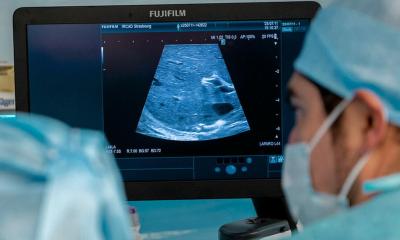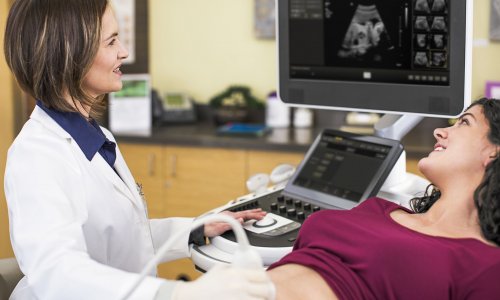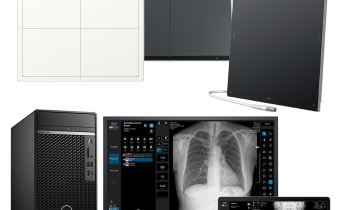The high profile agenda of Europe's biggest radiology congress
'Radiologists must step out of the shadow of their machines'
The 2008 ECR promises to be international, controversial, inspiring, as well as a meeting in which new insights for inter-professional relationships and working practices are sought. The programme is impressive indeed.

We asked Professor Maximilian F Reiser, this year’s Congress President, about the highlights, newly introduced themes and other pressing issues that impact on radiologists throughout Europe and beyond.
This year the guest countries at ECR are Germany, Israel and India. Why were they chosen?
Maximilian Reiser: ECR’s primary task is to present advances in radiology, and the selected guest countries are interesting for several reasons: Israel is an important location that generates many exciting drives and developments. India has established itself at an international level and we would like to draw attention to the country’s medical and radiological developments. We will focus on India’s diagnostics and therapy for tuberculosis, a disease of global significance that increasingly re-appears in the West. The German contributions highlight the potential of computer-aided diagnosis (CAD) in clinical applications. CAD will play an increasingly important role in radiology and we look forward to many interesting presentations that will show not only its advantages but also the drawbacks.
The ECR Meets Partner Disciplines is a new event on the agenda. What is this?
MR: It’s an entirely new and exciting format that aims to strengthen interdisciplinary co-operation. We invited colleagues from different countries, this year general practitioners (GPs) with whom we will discuss coronary heart diseases and peripheral arterial obstructive diseases in the context of atherosclerosis, for example: Where do these two areas converge? What does the GP have to know about diagnosis and treatment? How can radiology help?
We want to overcome communication barriers in order to improve exchange and cooperation. After all, as a radiologist, you have two types of customers: patients and referring physicians.
This issue also has a certain professional-political dimension because, in my opinion, in many countries the profession ‘radiologist’ is misunderstood. They are perceived as people who sit somewhere behind huge machines, whereas, in reality, radiologists are clinical physicians. Therefore, no matter how different European healthcare systems may be, radiologists have to step out of the shadow of their machines and present themselves as clinical physicians who play a crucial role in patient care.
We do not want to start a discussion on international healthcare systems, but ECR prides itself in being a particularly innovative congress – our programme bears testimony to that.
Which criteria do you apply when selecting a paper for the congress?
MR: The ECR offers a wide range of scientific sessions and professional seminars that deal with issues central to our work: How can we ensure that a diagnosis is as precise as possible? How do we most effectively control the success of the therapy? Here we not only choose presentations that provide the most knowledge, but we also aim at optimising the learning process by using interactive elements. A case in point: our ‘audience response system’, which is becoming increasingly important in events targeted at radiologists in training. This system allows the speaker to integrate the audience in his or her presentation, for example by soliciting opinions on radiation exposure. On a pad, the participant can chose between several alternative answers. This kind of interaction significantly increases motivation. The system can also be applied to check whether participants understood and retained the material under discussion. This is something particularly appreciated by our younger colleagues.
Unfortunately, we must decline many submitted abstracts — this year almost two third of all entries. However, this is by no means negative, because it shows that we have high scientific expectations and that we follow through on those expectations. A ‘no’ may be frustrating for the researcher, but we strive for utmost objectivity in our selection.
What are this year’s ECR highlights?
MR: There are many highly differentiated presentations on radiation exposure. Frequently this issue is being dealt with in quite a biased manner, that is, the focus lies on the risks and how to minimise them. But when we talk about radiation exposure we must always talk about the risks and benefits of a radiological examination. That’s what we want to emphasise in our events.
In the context of one of our Special Focus Sessions we will also address the issue of the ageing society – the ‘demographical tsunami’. We must find answers to questions such as ‘What does a sustainable healthcare system look like and how will this impact radiology?’ There are some highly interesting cross-disciplinary approaches, such as the use of telemedicine for stroke diagnostics. A further example is mobile diagnostic systems, because they are already used in Norway, where a patient does not go to a radiologist for X-rays, but the X-ray equipment goes to the patient. This is particularly beneficial for older patients because they no longer have to leave their familiar environment.
A further interdisciplinary session will deal with myomae, focusing on myoma embolisation with presentations by a gynaecologist, radiologist and a patient. This is very exciting, because the patient will describe her hospital experience in detail. She will present her records and show, very impressively, how her quality of life was impeded by the myoma and how much it improved after embolisation. The patient had learnt about this organ-saving therapy only after long research - and after four gynaecologists had recommended hysterectomy. Myoma embolisation is an acute problem, since this radiological intervention is not widely accepted, particularly in Germany. Moreover, myomae can be treated with focused ultrasound – another option that will be discussed.
Why has the Women in Radiology theme been introduced?
MR: Women are still discriminated against in radiology. It is unacceptable that the females earn less and in general have worse working conditions. It is unacceptable that the careers of women suffer because they have children. Nevertheless, that’s the reality and it’s a reality that women will discuss at this event. The presentations emphasise the social responsibility of radiology and they suggest solutions to these problems. We will also address possible political steps – for example the fact that we need more day-care for children. In some countries, such as France, childcare outside the family is well organised. In other countries this is still a huge problem.
However, there are solutions to all these problems and ECR, as the biggest European radiology congress, will contribute its share. I’m confident that all participants will welcome this year’s high-profile agenda and that, once again, ECR will be a huge success
06.03.2008











